Pawleys Island Welcomes Start of Sea Turtle Nesting Season
Every morning at sunrise, from May 1 to Oct. 31, volunteers with South Carolina United Turtle Enthusiasts, or SCUTE for short, walk the Pawleys Island beach in search of turtle tracks.
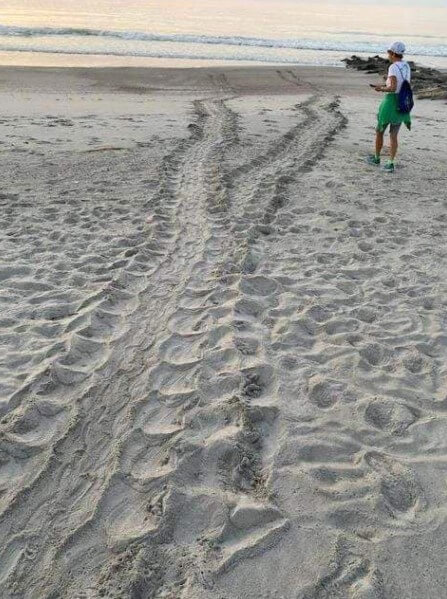
That’s because during this time, known as turtle nesting season, female sea turtles crawl up the beach at night near the dunes, lay their eggs, and bury them in the sand. SCUTE leaders ask the public to be aware of this special time of year and do their part to help the sea turtles.
Every second or third year, female turtles lay four or five nests a season, each containing an average of 120 ping-pong-sized eggs. Nests that are laid in the inter-tidal zone or areas at risk for foot traffic are carefully relocated by SCUTE volunteers who have been trained and authorized by the South Carolina Department of Natural Resources. You can spot sea turtle nests by their distinctive orange screening and orange signs on nest poles.
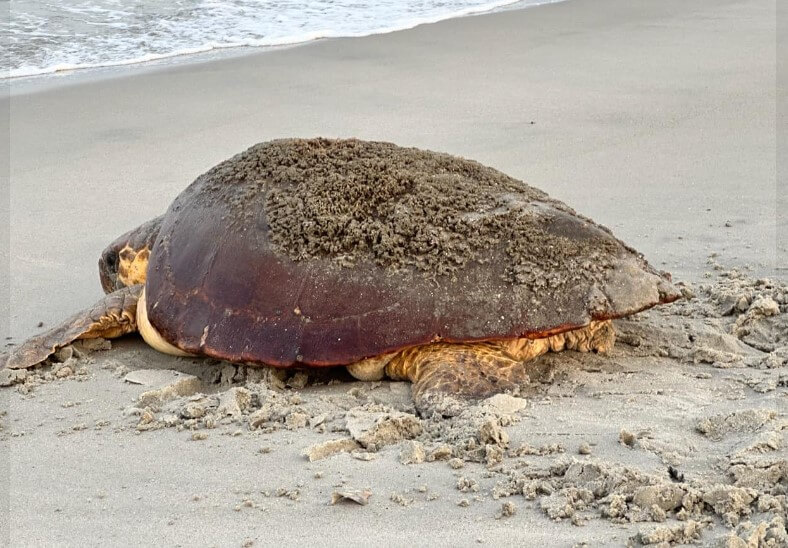
Mary Schneider, who has served as a SCUTE coordinator for Pawleys Island for more than 20 years, said that everyone heading to the beach this summer and fall can help make this a successful year for sea turtle nesting by doing these things:
- Fill in holes on the beach – sea turtles can get caught in them as they make their way to the dunes and hatchlings can get caught in them as they make their way to the ocean.
- Turn off house lights facing the beach – lights deter momma turtles from nesting and attract hatchlings that could use up their energy going the wrong way.
- Leave only footprints on the beach – tents, umbrellas and chairs left on the beach overnight are obstacles to momma sea turtles and hatchlings.
- Don’t disturb marked nests.
Schneider said she’s proud to be a part of SCUTE, which has helped turtles increase their numbers over the past few years.
“I enjoy protecting this very special species of turtles, the loggerhead,” she said. “It’s all about saving turtles, saving the species.”
Schneider is supported by her co-coordinator Dianna Eastman and about 50 local resident volunteers. Under a permit from the SCDNR, SCUTE volunteers serve as stewards to protect the turtles’ nesting habitat and as educators to those who show an interest in learning more about our turtles and how to help them.
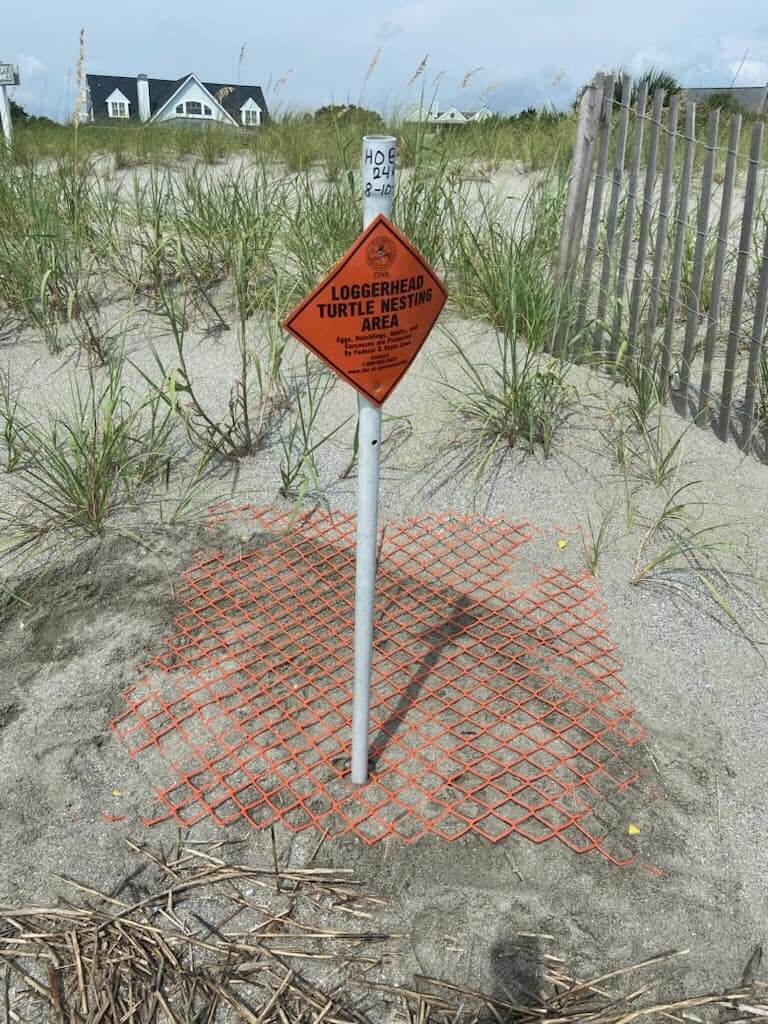
Schneider said SCUTE volunteers wear distinctive white T-shirts, and the public is invited to ask them any questions about sea turtle nesting.
“When you see a person on the beach with a SCUTE T-shirt, they are doing their jobs to protect turtle nests,” she said. “Ask them anything and they will tell you what they are doing and why they are doing it.”
When Schneider started with SCUTE, she said it was a good year to have 10 nests on Pawleys Island. She said in recent years, volunteers have seen up to 35 nests.
“These people are dedicated and have been doing this for a long time,” Schneider said. “Some of the people who walk Pawleys Island beach have been walking for 15 years or more.”
“So,” she continued, “what we are doing is certainly helping the population.”
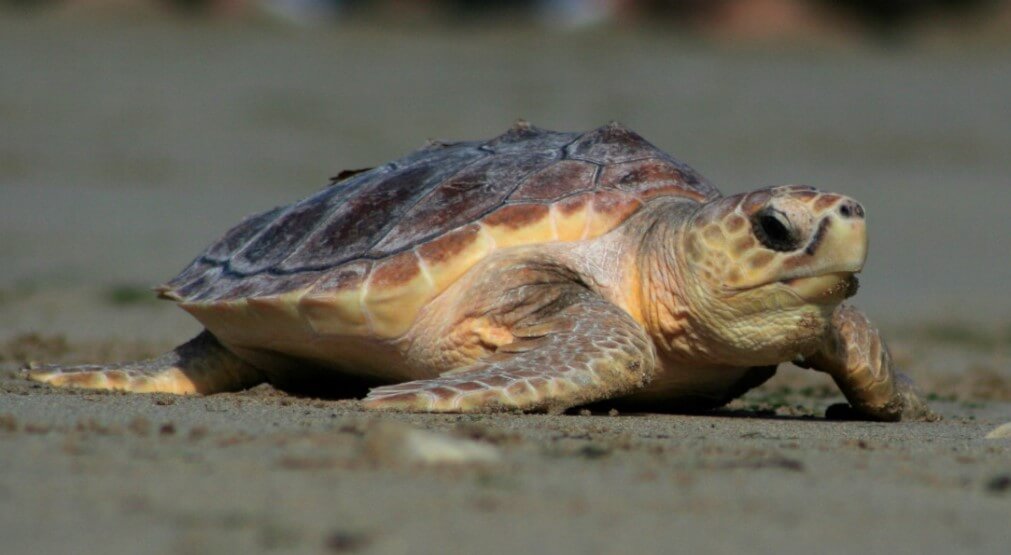
SCUTE was formed in 1990 by Chris Marlow and and the late Jeff McClary in response to the need for better protection of sea turtles that nest on Pawleys Island. Since its beginning at Pawleys, SCUTE has initiated volunteer programs at 13 different beaches in Georgetown and Horry counties.
From May until the last nest hatches, volunteers monitor the beach at dawn each day for signs of turtle activity; a simple crawl onto the beach, the laying of a new nest, or the evidence of an overnight nest hatch.
Richard Scott, head of SCUTE for the last two years, has been a member of the organization since 2011 and was a beach coordinator from 2019 to 2022. He said protecting loggerhead sea turtles is very important.
“Momma turtles look for dark, quiet locations to lay their eggs,” Scott said. “We encourage the public to turn off all beachfront lights and fill in large holes on the beach from May-October to foster a safe environment for nesting.”
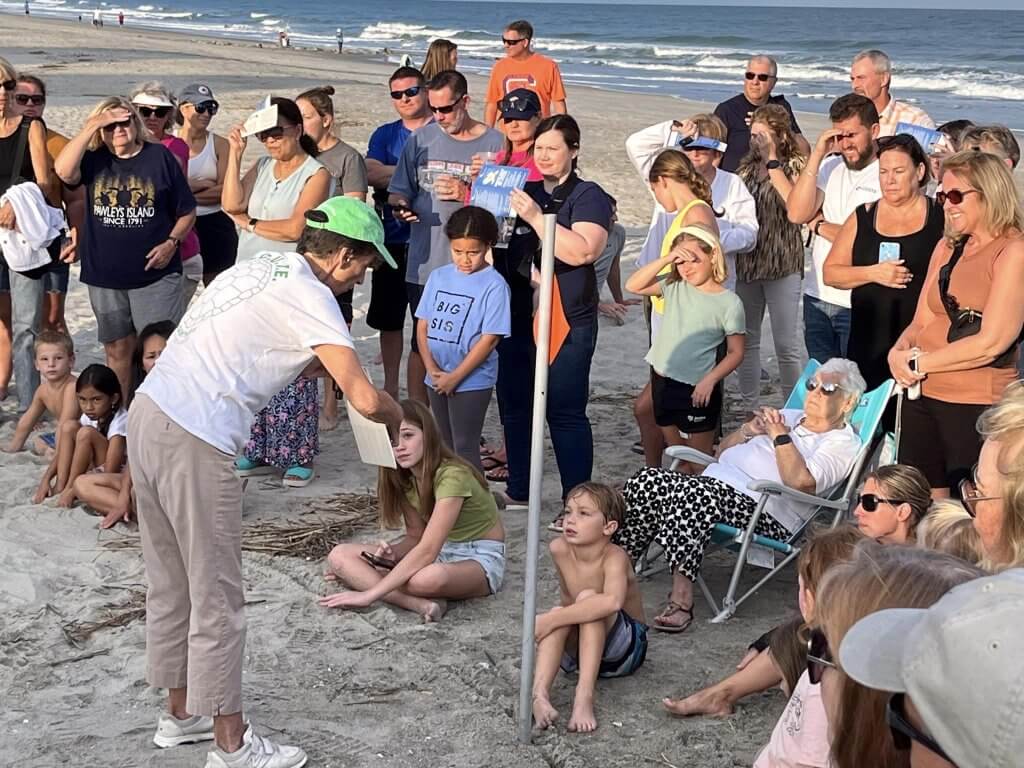
There are seven species of sea turtles worldwide: loggerhead, leatherback, green, Kemp’s Ridley, flatback, hawksbill, and olive Ridley. Virtually all turtles that lay nests on Pawleys Island are loggerheads – a species over 150 million years old. Adult loggerheads are usually three feet by four feet in size and weigh about 300 pounds.
In recent years loggerheads have made a recovery despite still being classed as endangered by the U.S. Department of the Interior. Nesting on Pawleys Island has increased from an average of eight nests a year from 1996 to 2001 to an average of 20-plus nests in the years 2010 – 2022. There was a record number of 35 nests on Pawleys Island in 2021 with 30 more in 2022. Loggerhead nests incubate for an average of 60 days with hatching almost always occurring in the coolest/darkest hours of the night.
Three days after a hatching is reported by a SCUTE volunteer, the nest is inventoried and its varied contents (hatched shells, live hatchlings, un-hatched shells, dead hatchlings) are reported to the SCDNR. Hatchlings that are alive in the nest are then guided as they crawl to the ocean.
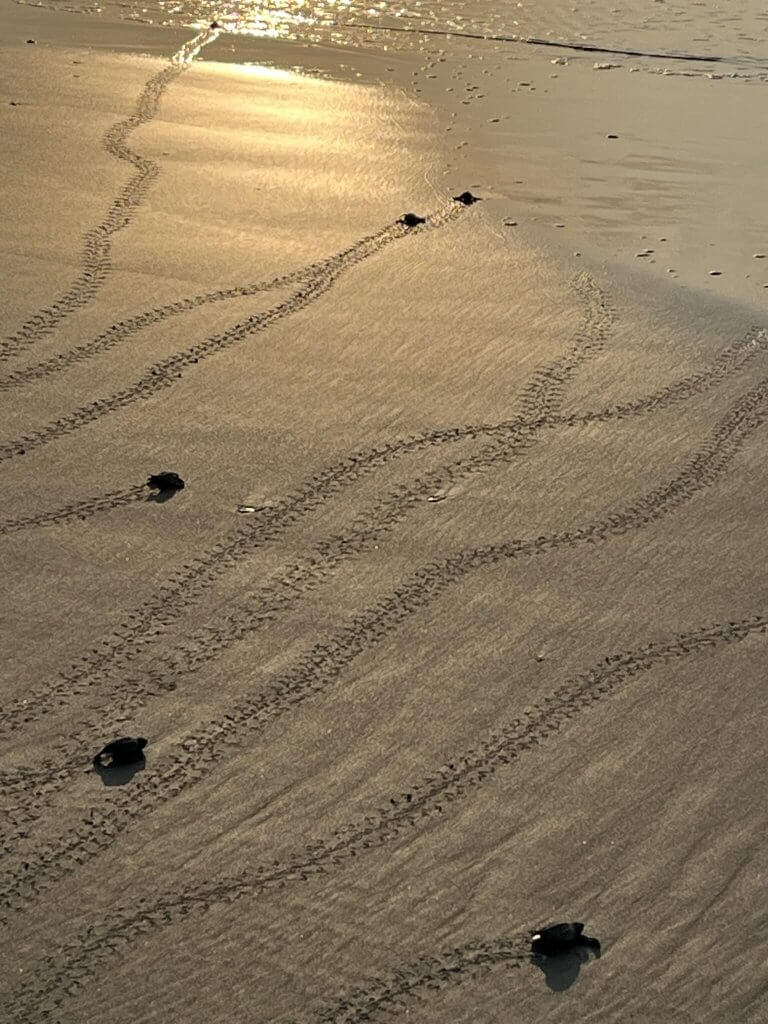
These inventories, which are posted at Pawleys Island Town Hall and the SCUTE Facebook page, are excellent opportunities for the public, particularly children, to learn about sea turtles and their protection.
“We welcome people to come experience these inventories,” Schneider said. “We love to focus on children because they are the next generation who are learning to take care of the earth.”
By Clayton Stairs / tourism manager for the Georgetown County Chamber of Commerce